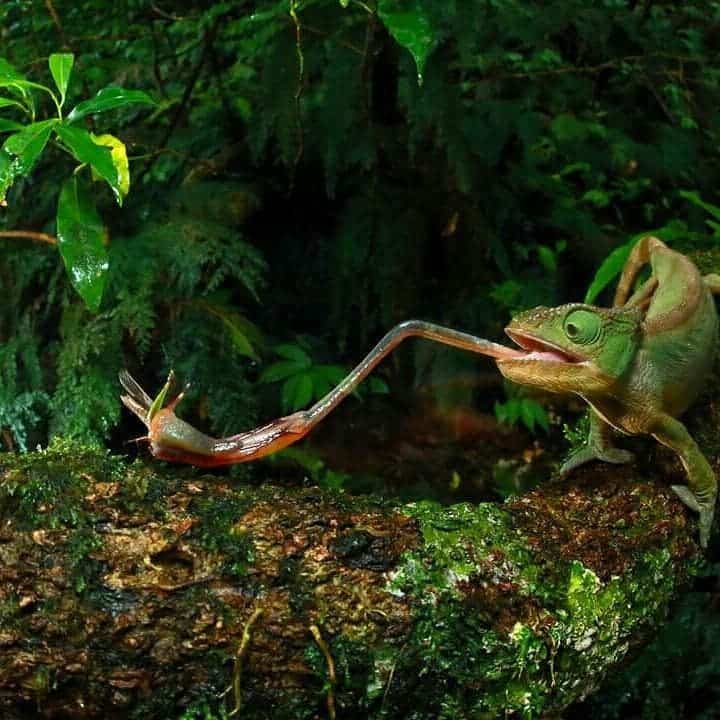
Besides its remarkable ability to morph with the environment, the chameleon has another amazing weapon that has perplexed biologists: its tongue.
The chameleon launches its lasso-like tongue with an acceleration faster than a jet plane making any prey in its range an inescapable target. Hitting and trapping prey is only the first step — the chameleon then has to retract the prey and ingest it. It does this with great success, but without curling the tongue.
It’s only now that we’re beginning to understand how the lizard can retract its tongue back with the same astonishing speed without losing grip of its lunch. The secret lies in an ultra-sticky saliva that’s 400 times more adhesive than human spit, a new study reveals.
Honey saliva
While most of his colleagues in the field have been focusing on the chameleon’s color-changing ability, Pascal Damman of the University of Mons in Belgium is more interested in the chameleon’s tongue. It’s easy to become mesmerized once you learn a thing or two about chameleon hunting.
The animals stay perfectly motionless for up to hours waiting for unsuspecting prey to come in range. To catch the food, the chameleon will bazooka its tongue to a distance up to two times the body length. That’s equivalent to a human extending his tongue for three meters.
“It’s the equivalent of a human eating a 25-pound hamburger, and then having to transport that burger to your mouth using only your tongue,” said Kiisha Nishikawa, a biomechanics researcher at Northern Arizona University, who was not involved in the study.
Previously, researchers posited the chameleon’s impressive tongue adhesion must have something to do with a suction cup-like tongue tip or even a “Velcro” effect.
Damman and colleagues could not confirm any of these theories. Instead, they decided to experiment with saliva collected from chameleons’ mouths. They placed some of this spit on an inclined plane then rolled a small steel bead down it. Strikingly, the adhesion of the mucus became stronger as the ball rolled faster. “When the tongue pulls rapidly, it makes the adhesion higher,” Damman said.
As it turns out, a chameleon’s spit is as sticky as honey allowing prey to stay on the tongue even as it retracts at 40 Gs, the authors reported in Nature Physics. The same sticky saliva can probably be found in other animals like salamanders, toads, and frogs, Damman says. “It opens up a new perspective for biologists,” he said.
Was this helpful?



